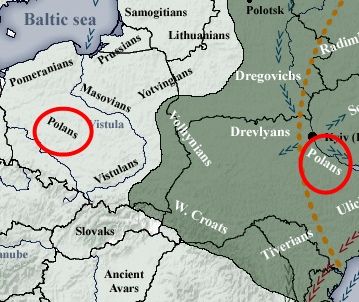The Rus were more like to the east or to the north-east of Polish brothers. Unless you mean our fellow eastern Poles from Kiev:
=================================================
BTW, not sure if you heard about the
Rurikid Dynasty DNA Project led by - nomen omen - Polish scientist, Doctor Andrzej Bajor.
Among tested descendants of the Rurikids they identified the following Y-DNA haplogroups (indicating paternal ancestry in direct lineage): N1c1 "Finno-Ugrian-Baltic", R1a (subclades L260 "West Slavic", P278 "West Carpathian", Z92 "East Slavic", M458 "Central European" and Z280 "Balto-Slavic") and I2a1 "Dinaric".
Here is a good summary of the project:
https://www.familytreedna.com/public/rurikid/default.aspx?section=news
The surprise (for some people) was total absence among the Rurikid dynasty of "Germanic" haplogroups such as I1, R1a Z284 or R1b U106.
Most frequent HG among the Rurikids was N1c1. Less frequent was R1a. The rarest - only present among Princes of Turov and Pinsk - was I2a1.
Modern distribution of N1c1 haplogroup (all of its branches) in Europe:
This haplogroup in Europe is most frequent among Finno-Ugrian peoples, Balts, East Slavs, Turkic-Tatar ethnic groups in Russia and Swedes.
But Swedes got it from assimilation (Swedization) of ancient Non-Germanic inhabitants of Northern and Central Sweden, such as Kvens, Finns.



 Just imagine the number of both legitimate and illegitimate children those kings of the Rus had!
Just imagine the number of both legitimate and illegitimate children those kings of the Rus had! 


